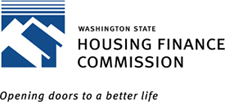- Homeownership
- Multifamily Housing
- Nonprofit Facilities
- Special Programs
- Property Managers
- For Investors
JUNE 2015 | DOWNLOAD PDF | CURRENT ISSUE | PAST ISSUES
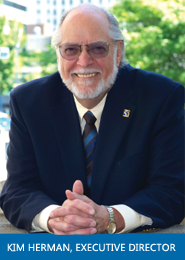
Washington State is breaking new ground to implement smart, sustainable practices in affordable housing
 Who doesn’t embrace the pursuit of clean energy, wise resource use, and
healthy housing? The challenge for all of us engaged in creating and
preserving affordable housing is: How can we achieve these objectives
affordably and predictably—while minimizing complexities?
Who doesn’t embrace the pursuit of clean energy, wise resource use, and
healthy housing? The challenge for all of us engaged in creating and
preserving affordable housing is: How can we achieve these objectives
affordably and predictably—while minimizing complexities?
For this issue of My View, I sought noteworthy sustainable
energy practices in affordable housing in Washington that are being
implemented successfully, that are replicable and measurable, and that
can deliver value over time by reducing operational costs, preserving
resources, and safeguarding resident health. I’m excited to feature these
efforts, as shared by community leaders, developers, project managers,
and green consultants.
![]()
The Evergreen Sustainable Development Standard v.3
Putting it all together: Bellwether Housing’s Asset Management Preservation Process
Inspiring resource efficiency in homeownership markets
The EnergySpark Home Loan
Program
The Evergreen Sustainable Development Standard:
The “greening” of
publicly funded affordable housing
Sustainable energy practices in our state were given a huge push forward in 2005 when the Washington State Legislature passed SB 5509, “Requiring public buildings to be built using high-performance green building standards.” This set in motion what is now known as the Evergreen Sustainable Development Standard (ESDS). Meeting this standard has been required of all projects funded through the Housing Trust Fund since July 2008—and since 2009, of all multifamily projects financed by the Commission as well.
The ESDS is made up of 79 criteria, developed by the Department of Commerce in cooperation with the affordable-housing industry, that “safeguard health and safety, increase durability, promote sustainable living, preserve the environment, and increase water and energy efficiency.” New construction projects must achieve at least 50 “points” by choosing from these criteria; rehab projects are required to meet at least 40 of these.
We believe the ESDS provides a healthy balance: protecting residents and
the environment, without placing too heavy a burden on affordable
housing developers.
The Green Team
Back row, left to right:
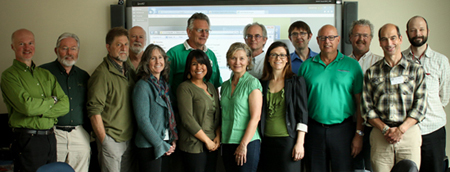 Lyle Harris- NW EcoDesign, LLC; John Probst- Catholic Charities Housing
Services; Matthew Horwitz- Ally Community Development; Dan Baldner-
Environmental Works Community Design Center; Gomer Roseman- Habitat for
Humanity -Tacoma/Pierce County; John deChadenedes- King County Housing
and Community Development; Scott Starr- SMR Architects; Doug Ogden-
Housing Trust Fund, Dept. of Commerce; Sean Harrington-Housing Trust
Fund, Dept. of Commerce
Lyle Harris- NW EcoDesign, LLC; John Probst- Catholic Charities Housing
Services; Matthew Horwitz- Ally Community Development; Dan Baldner-
Environmental Works Community Design Center; Gomer Roseman- Habitat for
Humanity -Tacoma/Pierce County; John deChadenedes- King County Housing
and Community Development; Scott Starr- SMR Architects; Doug Ogden-
Housing Trust Fund, Dept. of Commerce; Sean Harrington-Housing Trust
Fund, Dept. of Commerce
Front row, left to right:
Lynda Carey-
Bellwether Housing; Dena Harris- Housing Trust Fund, Dept. of Commerce;
Joanne Quinn- City of Seattle Office of Housing; Ainsley Close-
Washington State Housing Finance Commission; Harlan Falkin- Falkin
Associates, Inc.; Alistair Jackson - O'Brien & Company.
Not pictured: Chuck Murray-
Washington State Energy Office, Dept. of Commerce; Jason Manges- Beacon
Development Group; Whitney Goetter- Washington State Housing Finance
Commission; Nathan Poel- Office of Rural and Farmworker Housing
It’s all about process
Right now, Commerce—along with a 19-member advisory group known as the Green Team—is working on version 3.0 of the ESDS. The Green Team began meeting in January to hammer out revisions to the ESDS in response to feedback from stakeholders, increased knowledge, and advancing technologies.

“It’s critical to have a highly
collaborative environment with stakeholders who are on the ground.”
Dena Harris
Evergreen Program Manager
Washington State Department of Commerce
Dena Harris, Commerce’s Evergreen Program Manager, is leading this process, as she did five years ago during the standard’s first revision.
The ESDS, she explains, is based on Enterprise Community Partners’ national Enterprise Green Community Criteria, which were just updated in April 2015. “That’s our starting point, and then we tweak that based on Washington’s existing standards” and our state’s particular needs, Dena says.
Originally expected to be released in June 2015, the revision of the ESDS has been pushed back to early 2016, in order to give the Green Team more time for consultation and to incorporate any changes from the 2015 Energy Code.
“It really does take that much time,” Dena says. “It’s critical to have a highly collaborative environment with stakeholders who are on the ground—in the building-science world along with those in affordable housing. They understand the needs of the affordable housing community and balance that with the priorities for state funding—and they also push the envelope for green building.”
Balancing priorities
Dena emphasizes that in all these deliberations, being mindful of the highest and best use of public dollars is extremely important. “We don’t want to build the most uber-green building that’s super costly, because that means building fewer units—and that’s neither the goal nor the mission of the affordable housing community.”
Two significant additions to ESDS v.3 will be in line with the recent changes to the national Enterprise Communities Standard: First, resilience: planning for emergencies. “That doesn’t exist right now in the ESDS, and it’s important to include this,” Dena says.
Secondly, integrative design. “This is the pre-development work, basically bringing all the players to the table—the contractor, the architects, the engineer, hopefully some future residents, the property manager, service providers—at the beginning, to talk about the goals for the project and the design,” Dena explains.
Focusing on “the occupancy phase”
A valued contributor on the Green Team is Alistair Jackson, an owner and principal of sustainable building consultant O’Brien & Company.
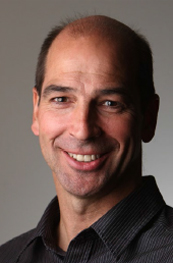
"I think people are waking up to
the fact that their water and sewer bills are significantly higher than
their energy bills.”
Alistair Jackson
Owner and Principal
O’Brien & Company
It’s become clear to everyone working on the ESDS, and in sustainability in general, Alistair says, that the design and project delivery phases of development can’t happen in a vacuum. “The occupancy phase is critical—and it’s somewhat different in the affordable housing arena than elsewhere.
“We put all this energy into designing green buildings, but we’ve not necessarily done a great job of joining all the dots in terms of how occupants experience them. In some cases we might have been so focused on delivering green that we’ve lost sight of occupants’ realities and priorities.”
Alistair believes the ESDS v.3 is working to address these concerns. “We’re in transition from thinking about green for green’s sake, and doing a better job of understanding how the value of these things drops down to all the people involved,” he says.
Collecting and analyzing data can be costly, Dena acknowledges. But how can you manage consumption without first measuring it? Alistair says he hopes this will be “rolled into ESDS at some level this time—for people to have the tools to understand their building’s performance.”
Pushing the envelope
As part of the review process for ESDS v.3, Dena explains, the Green Team has been reviewing data from all past ESDS-compliant projects. In terms of optional points, if any single criterion has been met by at least 50 percent of the projects, “we’re exploring how we can make this either somewhat more rigorous—or mandatory.”
A draft of ESDS v.3 will be available for public comment this fall on Commerce’s Evergreen Sustainable Development Standard website. Dena says the team welcomes “any and all” input from stakeholders.
Waking up to the Water Crisis
By early May 2015, drought emergency declarations had covered a total of 44 percent of Washington State. Parts of Western and Central Washington are particularly hard-hit; runoff is predicted to be the lowest on record in the past 64 years.
This year’s drought conditions are a wake-up call in a state where water has always been presumed to be plentiful. But even in years of plenty, water doesn’t come cheap. In my conversations with multifamily developers, managers, and consultants, I heard over and over that water efficiency is just as important as other sustainable practices. In many cases, water conservation efforts are yielding the biggest paybacks for building managers.
Graced as we are with a temperate climate and affordable hydroelectric power, our fuel costs are relatively low. But Washington State’s water costs are not only high by national standards, they are rising more rapidly than energy costs. Seattle Public Utilities, for example, announced last year that it was raising water rates by 30% over a six-year period.
“I think people are waking up to the fact that their water and sewer bills are significantly higher than their energy bills,” Alistair says.

“By shining a light on different areas of
operations, new opportunities present themselves.”
Bryan Ketcham
Director of
Catholic Charities Housing Services
Diocese of Yakima
Just as critical to this bottom-line calculation is the fact that most affordable housing operators face a split incentive: Residents in tax credit-funded (LIHTC) housing may pay their own energy bills, while the building’s management covers water and sewer costs. Fuel efficiencies save residents money on their utility bills, which is a good thing. But this doesn’t ease the operating-cost pressures on subsidized housing. Affordable owners and managers in our state are increasingly implementing audit processes to make residents’ utility allowances more accurate—a process I’ll discuss further on.
Paying attention to how municipalities structure utility fees
Securing greater efficiencies on the water and sewer side represent savings that a multifamily building’s operator can capture fully. This can go a long way, in the words of Catholic Charities Housing Services (CCHS) - Diocese of Yakima Asset Manager Holly Anderson, “in helping keep our properties viable.” Hearing about CCHS’s aggressive water-conservation strategies with Holly and CCHS-Yakima Director Bryan Ketcham makes it clear how careful attention to all aspects of a property’s water use can help conserve a precious resource and significantly save costs.
CCHS' operations cover about 18,000 square miles of central Washington, housing more than 2,600 people in 19 developments in seven counties. Two more developments are on the way. About 80 to 85 percent of this housing serves farmworkers and their families; all but one property serve families of no more than 50 percent of area median income (AMI).
In 2011 and 2012, aided by a grant from the MacArthur Foundation, CCHS worked with Beacon Development on a capital-needs assessment of their whole portfolio. It led to some surprising places.
First, a major finding was that at many of CCHS’s older, smaller sites, more than 85 percent of the cost of utilities was from water use. With some projects, that number rose to 95 percent.
But—and this is a big caveat—all water conservation efforts are not rewarded equally. Because of differences in the small communities in the region in how water and sewer is charged, water conservation in some communities may be great for the environment, but may not save a property money. An example of this, says Holly, is that some municipalities charge a flat fee, “whether you use zero water or up to an ungodly amount.” In other areas, municipalities have a more market-based system, with properties paying for what they use and therefore being rewarded for conservation.
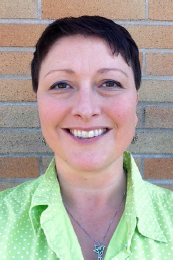
“We may cut the usage by one-half of what
was consumed in 2013.”
Holly Anderson
Asset Manager, Catholic Charities Housing Services
Diocese of Yakima
After determining the most cost-effective strategies, CCHS made several moves to reduce water use in their buildings, including replacing in-unit laundry appliances with highly water- and energy-efficient central laundries, installing low-flow water-saving fixtures in all new projects, and upgrading all pre-ESDS properties to water-saving aerators and showerheads.
But it was the water use outside the buildings that caught them by surprise.
Speaking the same language
A major result of CCHS’ research has been its subsequent focus on optimizing its landscaping and irrigation practices. Several years ago, CCHS hired Alistair’s O’Brien & Company to perform an irrigation audit of Villa Santa Maria in Mattawa, a relatively small project (45 units) set on a large piece of land.
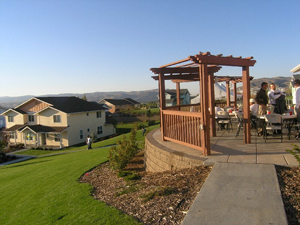
Villa Santa Maria sits on a sweeping hillside in Mattawa overlooking
orchards and the Columbia River. By re-commissioning its irrigation
systems and adopting a range of sustainable landscaping practices, CCHS
hopes to reduce irrigation here by 50 percent.
Alistair compares irrigation research to “a good whodunit.” What his team found at Villa Santa Maria was that sprinklers and other irrigation practices were working at just 50% of efficiency. “Basically, we were wasting a ton of water,” Holly says.
Last year, CCHS contracted with consultant AHBL to conduct a Landscaping Capital Needs Analysis (LCNA) for the properties in their portfolio. Recommendations from that work included:
Upgrading the irrigation systems. This benefits water conservation and
reduces grounds maintenance—and should pay for itself in two seasons.
Implementing a Landscape Maintenance Manual in both English and Spanish. Ninety percent of ground maintenance personnel at CCHS properties are monolingual Spanish, but nearly 100 percent of all written instruction provided to them had been written in English.
Creating Spanish-language signage for irrigation control systems.
Replacing or adding shade trees.
An interesting story accompanies that last bullet. AHBL consultants uncovered “an unusual recurring problem at our developments,” Holly recounts. Large shade trees that had been planted during the construction phase were being topped. Topping trees is a common pruning practice in Central Washington’s fruit orchards. “It dramatically decreases the life span of the trees—and slashes energy conservation efforts by eliminating nearly all of the shade they could produce,” she says, “obviously defeating the purpose of planting the trees in the first place.”
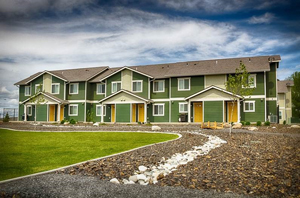
CCHS has used extensive
xeriscaping to conserve water use at Casa Kino. This 51-apartment
development in Quincy, targeted to farmworker families, preserves green
play areas for kids, while reducing turf in less-trafficked areas.
Last year, after implementing the bilingual manual and updating the labels on the irrigation control system to Spanish, Villa Santa Maria consumed 26.6 percent less irrigation water. O’Brien & Company estimates that the property could see an additional 25 percent decrease in consumption after re-commissioning the irrigation system. If that is achieved, “we may cut the usage by one-half of what was consumed in 2013,” Holly says.
Another source of savings: For its two new developments since the AHBL study, Casa Kino in Quincy and Sor Juana Ines in Grandview, CCHS has reduced the amount of irrigated turf by 35 percent, replacing it with basalt mulch over weed fabric. These properties are also “different” in that new residents were presented with a Living Green Handbook, which walks them through ways they can conserve resources and support a healthy environment. And, these properties make use of high-efficiency shared laundry facilities. In the first year of operations, water costs were $13,000 and $18,000 lower than anticipated. “I think doing all these things is helping considerably,” Holly says.
A natural synergy: Resource conservation and operations savings
Sums up Bryan, “We didn’t go into this process with the goal of reducing our water bills. That wasn’t on our radar at that time. We were trying to better understand the long-term use of our properties, so we started with a capital needs assessment.
“And then we learned what’s missing—the costs of maintaining the landscaping are not included in the capital costs of just the buildings themselves,” he says. “This speaks to the value of having an asset manager looking at your portfolio. By shining a light on different areas of operations, new opportunities present themselves.”
 Incentives for Homebuyers
Incentives for Homebuyers
wshfc.org/energyspark
The Commission entered the realm of energy in 2009, when the state
legislature gave us the authority to develop financing programs for
energy-efficiency and renewable-energy projects—not necessarily tied to
housing.
But along with financing wind turbines near Ellensburg and
energy-efficient upgrades for various nonprofit and commercial entities,
the Commission has been steadily building our energy program’s
connection to housing.
Our partnership with Green Canopy Homes was our first step. And
we’re about to launch the next: A home-loan program called EnergySpark
that rewards homebuyers who purchase an energy-efficient home—or make
energy-saving upgrades to that home.
“We hope this will not only help individual households to save money and
energy, but also start to change the way lenders look at the costs of
homeownership, so that energy efficiency becomes more valued,” says
Ainsley Close, sustainable energy lead for the Commission and, along
with the Homeownership Division, one of the
program’s architects.
Although a home’s energy efficiency is usually left out of
the mortgage conversation, it can make hundreds of dollars of
difference in the annual cost of owning a home. In fact, a March 2013
study by the Institute for Market Transformation found that owners of
energy-efficient homes are 32 percent less likely to default on their
mortgages.
Yet most homebuyers aren’t prioritizing energy efficiency when they buy.
And later, when they start thinking of making improvements to the home,
those “invisible” energy upgrades are understandably low on the list.
EnergySpark seeks to change that dynamic by offering a ¼ percent
savings on the interest rate for those who purchase an energy-efficient
home (defined by standards such as BuiltGreen and LEED—see
wshfc.org/energyspark for details). It also allows buyers of older homes
to wrap energy-saving upgrades into the mortgage up front (with the same
¼ percent savings). An energy assessment of the home shows which modest
improvements will have the most impact, and the buyer finances those
improvements into the loan. Another energy assessment afterwards
confirms that the home has been made at least 10 percent more efficient.
EnergySpark doesn’t work in a vacuum—it builds on mortgage products that
already finance energy improvements at the time of purchase, such as the
FHA 203k Streamline and the Fannie Mae Energy Efficient Mortgage. These
programs are currently under-utilized by lenders because many do not
know they exist, or are wary of the extra processes involved.
At press time, lenders were showing interest and even enthusiasm for
EnergySpark, as we prepared for the program to launch statewide. We
have high hopes.
In CCHS’s case, “water scarcity is a significant concern to growers in our region,” he says. “The common-sense changes that we can make on our sites not only achieve our goals operationally and environmentally, but also have the benefit of keeping more of this precious resource for growers. It’s a natural synergy.”
Accurate utility bills for residents are helping shore up operational costs for property managers
As I mentioned above, many property managers are turning to utility allowance audits in order to capture an accurate picture of residents’ actual utility usage, and in the process, gaining much-needed operating income. This is a strategy that is being implemented successfully around the state. CCHS has completed Utility Allowance Adjustments for three of their properties. I’m including their experience here to illustrate the process and the potential benefits.
First, some background. For tax credit properties, federal regulations require that residents' portion of rent, plus their estimated utility allowance, do not exceed the maximum tax-credit rent limit for their income set-aside.
The “utility allowance” is the amount that a property estimates each resident is paying for utilities. The rent must be adjusted so that the rent plus the utility allowance are under the acceptable maximum tax-credit rent limit.
To comply with tax-credit regulations, properties can use different methods to calculate the utility allowances assigned to residents.
In Washington State, they are often based on local Public Housing Authority (PHA) utility allowances; other properties’ allowances are based on Rural Housing Services (RHS) or HUD calculations, local utility company estimates, or other sources. An owner can also submit a proposed utility allowance for a building based on the performance of a building of similar size and construction in the same area.
A utility allowance is often only an estimate. For example, if a property is following the ESDS in implementing energy efficiencies, it’s likely that a standard utility allowance like a PHA’s, which may include older buildings, is overestimating residents’ utility costs. That means more of the rent payment than necessary is going to cover utility costs. Conversely, properly estimating the utility costs allows the collection of more operating revenue to support the project. That’s why utility allowances are important—they affect a building’s net operating income. In fact, in the case of a property in development, an accurate utility allowance could increase the developer’s loan amount to construct the project.
CCHS’s experience: “Happily surprised”
To complete its first three utility allowance adjustments, CCHS again partnered with Beacon Development. The process entailed gathering 12 months of continuous resident electrical utility data to establish averages. The result: CCHS increased its operating revenue from $4,000 to $7,000 a year, improving the properties’ viability.
What were the residents’ responses when their rent bills went up? “I was happily surprised,” Holly says. “There was some pushback, but there hasn’t been a single complaint that has gone past our property management. Tenants may not like the increase, but it is well explained: They’ve been underpaying on their utility allowance for a certain number of years, and now we’re just matching their allowance to what they’re actually spending.”
Thanks to a clearly outlined process supplied by Beacon, CCHS is performing the same audits of four other properties in 2015.
Embracing Solar
On top of the three-story, rectangular Holiday Apartments in Seattle may be the nation’s first community solar project to be utilized by affordable multifamily housing. What Capitol Hill Housing (CHH) Sustainability Director Joel Sisolak knows for sure is that it’s a first for Washington State—even though they didn’t plan it that way. “Without finding any instructive examples, we had to just sally forth,” Joel laughs.
The 26-kilowatt voltaic system on the Holiday’s roof is essentially crowdfunded. Like other community solar projects, it works by having a utility’s customers pitch in to help with the upfront costs of building the solar energy system. Community ratepayers are invited to purchase “solar units” via their electric bills.
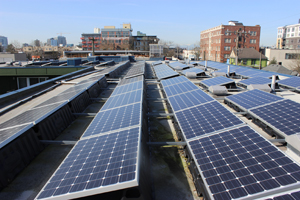
Capitol Hill Housing’s community-solar project on the roof of the
Holiday Apartments produces about enough electricity to power residents’
common areas, including the laundry room, entry lobby, and other shared
spaces.
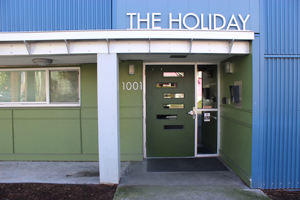
The 30-unit Holiday Apartments in Seattle’s Capitol Hill neighborhood
was built in 1958, but completely renovated by Capitol Hill Housing in
recent years.
In the case of the Holiday Apartments, this ranged from $150 to $18,000. At the end of each year from 2014 to 2020 (the solar installation went live just before Thanksgiving 2014), these investors get credits back on their bills, based on the amount of energy generated by the system. CHH anticipates that participants in the project will recoup their investment—and then some.
In 2020, the Holiday Apartments will “own” all 25,000 kilowatt hours (kWh) per year produced by the solar array. That production will basically zero out the house meter, which includes a laundry room and the common spaces (although it’s not enough to provide electricity to the Holiday Apartments’ 30 units). The energy savings will “help us provide subsidized housing,” Joel says. “The main beneficiary of the project is our operating costs—and that ultimately benefits everyone we house.”
An uncertain fate for our state’s solar subsidies
Joel and CHH climbed a steep learning curve to make this project a reality. It helped, he says, that they were working with “a progressive utility like Seattle City Light. Having their interest in participating was a critical part of the mix.”
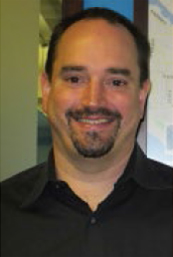
“The main beneficiary of the project is our operating costs—and that
ultimately benefits everyone we house.”
Joel Sisolak
Sustainability Director
Capitol Hill Housing
Joel also underscores how critical the current Washington State solar incentives are to this project. Currently, this incentive program is slated to end in 2020; its fate continues to be debated in the Legislature. The project also benefited from a 30% federal tax credit for commercial properties—but this, too, is set to drop to 10% at the end of 2016. “I can’t see a way that it’s currently possible to make solar affordable without some level of subsidy,” says Joel.
Currently, Joel and CHH are working with Northwest SEED (Sustainable Energy for Economic Development) to explore how affordable developers can expand the community solar effort. “We’re studying its feasibility—trying to develop a business plan for bringing community solar to scale,” Joel says. “We’ve gone through the brain damage of doing a pilot; the question is: What would it take to replicate this on a few or even many more buildings?”
This work explicitly connects with CHH’s larger vision of sustainability achieved on a neighborhood scale. Since 2011, CHH has been engaged in fostering the Capitol Hill EcoDistrict, an initiative committed to community health and affordability, and to solving sustainability challenges. “Our hope is that community solar can become a new, sustainable source of revenue for CHH and/or the EcoDistrict,” says Joel.
The business case for solar: DevCo is moving ahead
Jack Hunden is president of DevCo, Inc., a privately owned affordable multifamily housing developer and manager that has built affordable housing all over our state. DevCo’s properties house people whose household incomes are 60 percent of AMI or lower.
I asked for Jack’s perspective on solar for his properties because he’s just decided to install a photovoltaic system on the roof of the recreation building of DevCo’s latest project, Kitt’s Corner. Kitt’s Corner is being built in Federal Way and will have 216 units. Installing a solar system on a property is a first for DevCo.
“There’s a bias among all of us here in favor of promoting the growth of alternative energies,” Jack says. As with the Holiday Apartments, the system on the Kitt’s Corner rec building will produce energy solely for common areas and, in the long run, help reduce operating costs.
Jack says he considers this first, smaller system as a pilot. He’s working with Ainsley Close, the Commission’s sustainable energy lead, to determine whether installing solar panels on the entire development could be financially viable. “There may be some way, for example, to demonstrate this would result in a lower utility bill for the residents that could be reflected in their utility allowance. That would mean the money we spend on solar installations on the top of all the apartment buildings would become financially feasible for us.”
Two factors that make the investment potentially feasible are the current federal and state solar incentives. “If you’re limiting the incentive it’s a much slower payback,” Jack says. Because the current state solar incentive is calculated based on how much of the equipment is made in Washington, DevCo has chosen to install a 9.8-kilowatt system manufactured here, which has an estimated payback period of just over five years. After that, “continuing subsidies are very much up in the air,” says Jack.
For more information on current solar credits: Washington State Solar Incentives and Federal Solar Investment Tax Credit (ITC).
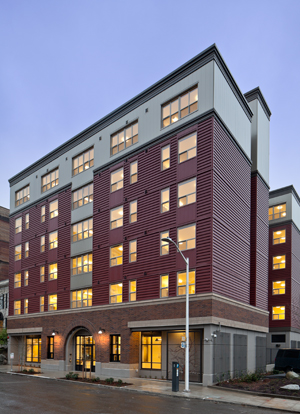
PHOTO CREDIT: William Wright Photography
Completed in 2013, Plymouth Housing's Pat Williams Apartments in
Seattle’s Lake Union neighborhood provides safe, supportive housing for
81 formerly homeless adults. In terms of BTUs per square foot, says
Plymouth’s Director of Facilities Kim Lokan, “Pat Williams is by far the
best performer in heating and water use in our portfolio that follows
energy codes.” Newer buildings, she explains, operate under more
rigorous code requirements. During Pat Williams’ design and
construction, much work went into creating a high-performance
envelope—including foam exterior insulation and carefully calibrated
ventilation—to heighten efficiency and lower heating costs.
Resident Conservation Efforts
Where can affordable housing get the biggest impacts from sustainable approaches? Joel gives a succinct answer: “At the end of the day, the best source is through conservation.” Joel says one objective of CHH’s community solar projects is “to use it as an entry point—a marquee to open a larger conversation about resource use and energy. Energy and water efficiency in our buildings is ultimately the bigger priority. But people like solar. It helps them grasp sustainability at a basic level. And then you’ve gotten their attention.”
Most housing providers have a conservation discussion with residents at lease-up, but it’s clear that this requires an even greater commitment. CHH is currently working with Seattle Housing Authority and several other partners to explore ongoing resident engagement efforts. They are poised to launch their first 10-building pilot and CHH has applied for a Public Participation grant from the Department of Ecology. “We’re hoping to pilot our program around waste and recycling, and then eventually expand it to energy, water, healthy and non-toxic living spaces, as well as civic engagement.”
Incenting people to do the right thing
Alistair Jackson says, “If you educate people to understand why being conservative is useful, you then empower them to take some action. If you increase the relevance of it by making it somehow direct and tangible—incentives, whether they’re cash or other things—I think you start to see change.
“We also need to be better with design approaches that make it easy for people to do the right thing,” he adds. He brings up the topic of choice architecture. “If we can design a building or a process so it’s easier for people to make the right choices, then it just becomes about people naturally choosing to do those things. And that, I think, is a model that we’re starting to see work.” He offers the example of Seattle’s solid waste management program. “Everything is clearly communicated. The garbage cans, recycling bins and food waste are all different colors. They’ve made it easy and it works well.”
A second example he discusses is the choice architecture integrated into the Bullitt Center on Capitol Hill in Seattle, considered the greenest office building in the world.
Alistair points to the Bullitt Center’s ‘irresistible stairway.’ It was designed to delight users, both with its attractive design and materials, and its views of downtown Seattle and Puget Sound. And the stairs are right at the building’s front entrance. “It’s easier and more enjoyable to use the stairs. We’re looking to do the same thing in multifamily buildings, because it saves energy—but even more important, it’s good for people to get that exercise.”
This is where conservation ties directly into sustaining healthy communities. “Facilitating people to make choices to be more active is clearly demonstrated to have good health outcomes. We need to better understand the connections between building design and operation, and occupant behavior and community health costs. Because at the moment those things are not connected—and they ought to be.”
Putting It All Together: Bellwether Housing’s Asset Management Preservation Process
Bellwether Housing recently engaged in a clear-eyed process of analyzing potential sustainability elements for a new low-income multifamily development in Seattle’s University District. This enterprise—what they call the Asset Management Preservation (AMP) process—has been painstaking. Any contemplated shift from Bellwether’s past building practices toward greater sustainability has been scrutinized for precise, measurable long-term paybacks in decreased operational costs.
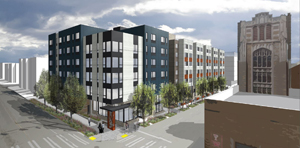
In developing the University District Apartments in Seattle, Bellwether
Housing innovated a cost-benefit process for a range of sustainable
elements. Their research uncovered some surprising findings—which will
be incorporated into the building when it breaks ground this fall.
“One of the conundrums we face in terms of long-term asset management,” says Bellwether Senior Housing Developer Richard Loo, “is that around year 10 or 12 of a building’s life, NOI becomes negative. That’s because utility costs increase faster than rents, and affordable housing properties often have restrictions on their ability to increase rents.” Richard is the project manager for the University District Apartments, a 133-unit project for households between 30 and 60 percent AMI. The project will break ground this fall.
“I wanted something that was tangible”
Bellwether is committed to sustainable building practices, Richard explains. “We own 30 buildings and we always try to forecast how we can best preserve our assets.” Because of the difficulty in quantifying the financial benefits of green building, past green charette processes were often frustrating. “Many green building elements would get value-engineered out,” he says.
Working with money from a Transit Oriented Development (TOD) grant from Enterprise Communities, Richard set out to uncover sustainable benefits that could be clearly identified up front. He set aside about $500,000 from the building’s construction budget, earmarked to pay for the additional construction costs that would deliver the most value in the long run, based on “measurable differences in utility cost savings.” One of the most valuable aspects of the AMP process was studying two of Bellwether’s existing buildings to identify where Bellwether’s current utility costs come from.
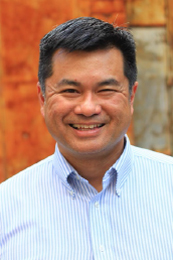
“We own 30 buildings and we always try to
forecast how we can best preserve our assets.”
Richard Loo
Senior Housing Developer
Bellwether Housing
The AMP process set out a “good, better, best” paradigm. “Good” is baseline: basically meeting ESDS and/or current code requirements. “Better” is a change that is substantially better than baseline or code and provides a balance between high performance and healthy long-term investment. “Best” is uber-green: maximizing efficiencies regardless of cost.
And the winners are ….
By order of magnitude in terms of utility savings to Bellwether, these
were the three top building elements that Richard and his team found:
1. Installing water-saving fixtures
2. Eliminating trash chutes
3. Adding extra insulation
(2”x 8” exterior walls, plus performing
testing on the building’s envelope air barrier during construction)
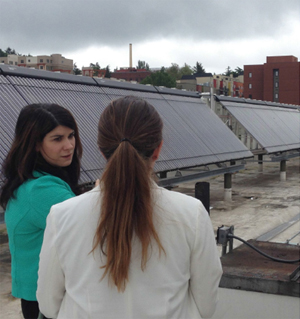
On the roof of the Addison on Fourth, Rita Burden
of Goodman Real Estate shows a visitor the building’s solar-thermal
array.
Solar Supports Energy Overhaul
The Addison on Fourth, near Seattle’s Pioneer Square, is a
100-year-old affordable apartment building making use of 21st-century
technology. When private developer Goodman Real Estate bought and
renovated the building in 2013, an array of solar-thermal tubes was
added to the roof—part of a complete overhaul of the building’s heating
and hot-water systems accomplished with the help of MAK Mechanical.
The solar tubes pre-heat the central domestic hot-water system, where
new high-efficiency boilers heat it further and pipe it to all 254
apartments, plus common areas and laundry.
Sean Beattie, the project manager (formerly of MAK Mechanical), the
project manager, explains that “with the solar thermal, the boiler only
has to bring the water from 80 degrees up to 115 degrees, as opposed to
bringing groundwater from 55 to 115 degrees,” says Sean. “That’s a lot
of savings there.”
Meanwhile, the building’s heat now comes from a high-efficiency steam
boiler. Like many older affordable-housing buildings in downtown
Seattle, the Addison had previously purchased its heat from Seattle
Steam, a local private utility.
Sean estimates that the new system, which qualified for grants from
Puget Sound Energy and the federal government, will return the company’s
investment in three and a half years. “The first time I saw the
[Addison’s] gas bill after the work, it was amazing—under a thousand
dollars,” he says. “That’s like six cents a day per door.”
The systems overhaul also gave the building much greater control over
the energy used by residents. Goodman Real Estate asset manager Rita
Burden says that before the renovation, the heat in the units was simply
"on" or "off".
“Now we can use the solar energy to help heat water, but we also have
internal controls in the units and hallways to help with efficiency,”
Rita explains. “Utility costs increase every year, and since the rental
rates do not always increase at the same rate, it is very important to
make your costs as efficient as possible.”
Richard notes that all water and garbage savings go directly to the building’s operational bottom line, as Bellwether pays for the entirety of these utility costs. Number 1 is projected to reduce water usage by about 28 percent. This includes water-saving toilets which use just .8 gallons per flush. “We definitely are testing that one out,” Richard laughs. “We’ve ordered one to have it installed in our administrative office to see how well it works.” Mercy Housing, for example, is retrofitting all of their properties across the country with this toilet.
Number 2 took some time for Richard’s team to figure out. Some of Bellwether’s existing buildings have high utility costs from garbage pickups. The culprit: Trash chutes. That’s because recycling materials are bulky. Just one container at the bottom of a chute fills up quickly and has to be emptied two or three times a week by the trash company—which charges a fee each time. But by enlarging the trash room at the new building to include more containers for recycling, trash pickups can be cut back to one a week. Bellwether expects to save $20,000 a year with this modification.
The combination of Number 3, plus other energy efficiencies like triple-glazed windows and added roof insulation, is projected to reduce the building’s heating bill by approximately 25 percent.
The big picture:
The targeted, sustainable measures have been incorporated in the
building’s
design and development budget at an additional hard cost of
$580,000.
The projected operating savings is more than $75,000 per year.
The payback period is seven years.
Of all the added sustainable elements, the greatest impact to the residents in terms of reduced electric bills will be energy-efficient light fixtures, cove heaters, and the building’s extra insulation. “Our study did not focus on the savings to the tenants, but we have the data and I’ve asked our consultant to study this further,” Richard concludes.
Green Canopy’s mission: Inspire resource efficiency in homeownership markets
How can sustainability intersect most effectively with affordability for homeowners? Aaron Fairchild has an ambitious model. His Seattle-based company is renovating and building sustainable, energy-efficient homes in Seattle and Portland, many of which are deliberately targeted to moderate-income households. Their vision is to scale and replicate their model in other urban markets as well.
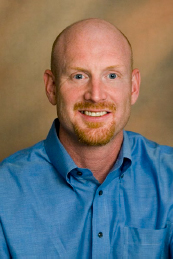
“When you keep the cost of owning their
home more manageable, you're truly making an impact on their quality of
life.”
Aaron Fairchild
CEO and Chairman of the Board
Green Canopy Homes
Aaron is CEO and Chairman of the Board of privately held Green Canopy Homes in Seattle. He founded Green Canopy in 2008, right when the notion of affordable homeownership in the U.S. was under fierce assault. Green Canopy’s mission is to “inspire resource efficiency in residential markets.” Aaron, his team, and the company’s shareholders practice what they preach: The sustainable elements they build into homes help bring down the ongoing cost of homeownership by lowering utility bills.
And, importantly, Green Canopy is also focused on keeping these homes affordable to buy. “It’s about being thoughtful,” says Aaron. He gives the example of six courtyard-sharing homes, affectionately dubbed Earth Six, that are currently being constructed, in part with financing from the Commission’s Sustainable Energy Trust, in the Delridge neighborhood of Seattle. “In these homes, we could have gone with high-efficiency—98 percent efficient—furnaces: They’re ducted forced-air systems. A standard builder’s going to do that. That’s typically how they build; they’ve built that way for a very long time.”
The Green Canopy alternative: ductless, mini-split heat pumps. “A ductless heat pump is 230 percent efficient. It’s also more comfortable,” he adds. “It’s not forcing air particulates through the house. It provides better indoor air quality.” In sum: more efficient, more comfortable, and better air quality. Yet, Aaron says, the incremental costs between the two systems are comparable.
The underlying processes that no one sees
Why aren’t more homes being built or renovated this way? Most homebuilders, Aaron says, “don’t have a mission that’s directing their decision making. Why don’t other builders install energy-recovery ventilator systems? Why isn’t every builder doing advanced air sealing?” He describes the assiduous attention his team pays to caulking, foam, and insulation to prevent air penetration. “These things are ‘extras’—but they’re cheap and they take very little time.”
Homeowners’ utility bills are the ultimate proof of process. The average electricity use of a Seattle home, Aaron says, is 28,000 kWh/year; the City’s target for 2020 is 22,400 kWh/year. He gives the example of one of three homes, nicknamed the Triplets, that Green Canopy completed in 2013. “It tested out at 12,000 kWh/year.”
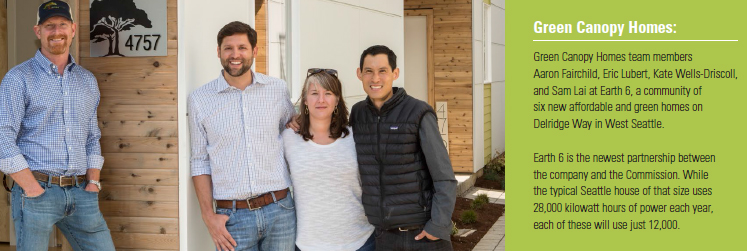
The Commission has partnered with Green Canopy since 2013. In fact, the Triplets were the first of 16 affordable Green Canopy homes that have received construction loan financing through the Commission’s Sustainable Energy Trust. In Seattle’s real estate market, it can be a challenge to find homes that can be improved and sold—and still remain within the affordability guidelines of the Commission’s homeownership programs.
Green Canopy’s model, Aaron says, “selectively harvests opportunity in the urban setting. And that’s really what we’re about. We love the process. Not necessarily the material selection, certainly not the code-built ‘boxes’ that all look the same. But the underlying processes that no one sees. These are critical in capturing efficiencies when building in a non-efficient, in-city environment. The people who are buying these homes—their utility bills typically make up a significant percentage of their income. When you keep the cost of owning their home more manageable, you’re truly making an impact on their quality of life.”
From the Commission’s viewpoint, lowering the cost of homeownership means more low- and middle-income families can afford to become homeowners.
